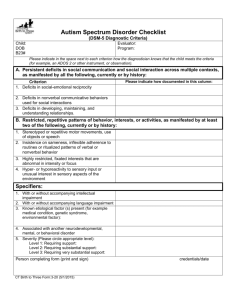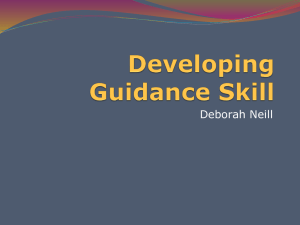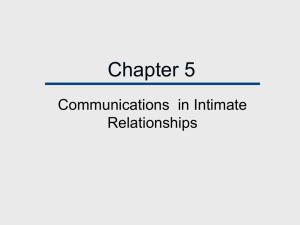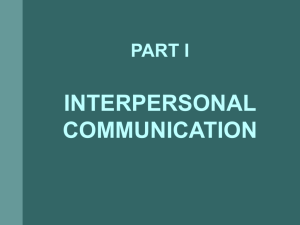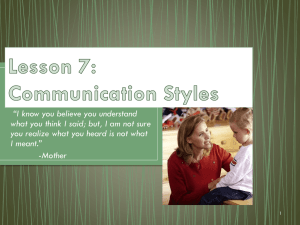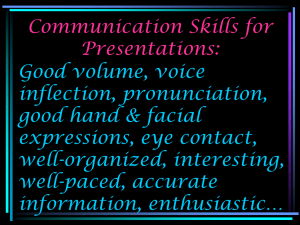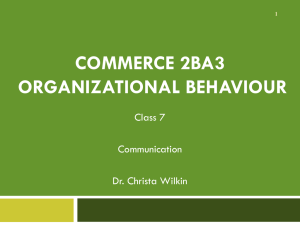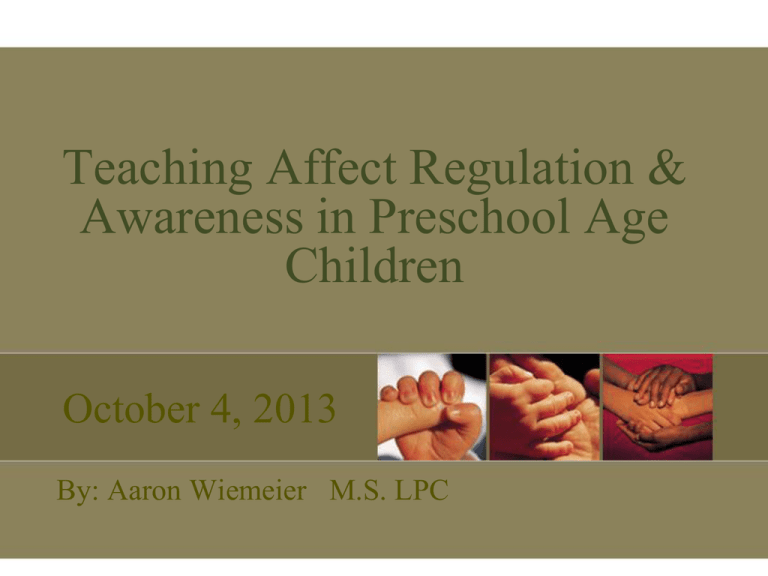
Teaching Affect Regulation &
Awareness in Preschool Age
Children
October 4, 2013
By: Aaron Wiemeier M.S. LPC
What is Affect Regulation?
Definition: The ability to manage ones
emotional state in a functional way to meet
primary need fullfillment
Needs Met
Reduce Stress
Survival
Conserve Energy
Survival
Spectrum of Affect Regulation
Depressed
Manic
Restful / Activated
Cycle of Affect Regulation
Normal Adult
Bipolar Adult/Child
Infant Child
(note – frequency can be greater)
Affect Regulation continued
• Starting Point For Ego Development (I am Ok, I can
handle this, I can get my needs met)
• Primarily Learned from Attachment Figure
• Initial goal for child is to: “stretch” out the cycle not
eliminate the downs (frequency & duration)
Regulatory Systems of a Human Being
Autonomic Nervous
System
Sympathetic
Parasympathetic
Regulatory Systems of a Human Being
Sympathetic
Parasympathetic
Excitatory
Inhibitory
Adrenaline (Cathecholomine
System)
Noradrenaline/Cortosol
Fight, Fly or Freeze Response
Calm Down, Relax, Rejuvinate
Regulatory Systems of a Human Being
Sympathetic
Structure
Parasympathetic
Rate increased
Heart
Rate decreased
Force increased
Heart
Force decreased
Bronchial muscle relaxed
Lungs
Bronchial muscle
contracted
Pupil dilation
Eye
Pupil constriction
Motility reduced
Intestine
Digestion increased
Sphincter closed
Bladder/
Rectum
Sphincter relaxed
Decreased urine secretion
Kidneys
Increased urine
secretion
Development, Regulation & Feelings: Connecting
The Dots
• Regulatory Systems biochemically develop b/w 6 months in-utero 16 weeks
• Birth to 1 month Sensory capacities, distinctions in vision, hearing, taste,
touch, temperature, perception of pain
• 2-3 months color perception, smiles at a face
• 7-9 months separation anxiety/attachment formed/forming
• 10-12 months anger, affection, fear of strangers
• 1.5-3 years temper tantrums, resentment of new baby, 200 word vocabulary,
differentiation of facial expressions of anger, sorrow, joy
• 3-5 years affectionate towards parents, pleasure in genital manipulation,
romantic attachment to opposite sex parent, jealousy of same sex parent, fear of
dark, fear of injury, pride in accomplishments
(www.childdevelopmentinfo.com)
Healthy Regulatory Cycle (positive & negative stressors)
Stressor
Nonverbal Positive
messages
(modeling) “I can
handle this” Im OK”
I can calm myself
Neurochemicals to
normal levels
Temporary
Neurochemical
Response
Caregiver
Reinforcements
Unhealthy Regulatory Process/Cycle
Temporary
Neurochemical
Response
Stressor
Caregiver:
Abuse
Rejection
Dismissal
Avoidance
Reactivity
Resetting of
Thermostat
Plus
I am not OK
I cant handle this
Im in danger
I am bad
Feelings are not
OK/normal
Behavior consistent with less
ability to manage emotions
reinforcement of negative
messages both from
community & culture
The “Big 3” – Steps to create change
and improve Emotional Regulation
Nonverbal
Awareness
Healthy
ER
Modeling
Emotional
(BodyFocused)
Awareness
Nonverbal Behavior In Human Beings
Why is it so important?
75% of communication
Trauma memory non-declarative (verbal)
memory
It is more reliable
NV awareness in self & others leads to better
modeling
Mechanisms of Non-Verbal Behavior
•
•
•
•
•
•
•
Eye Contact
Facial Expression
Voice Tone
Posture
Gestures
Timing
Intensity of Response
Nonverbal Behavior
www.myfeelingsworkbook.com
Emotional (Body-Focused) Awareness
•
•
•
•
•
Preventative & Resiliency Building
Because you feel feelings IN your body!
Normalization of Emotions
Separation of Emotion from Emotional Behavior
Research of Emotional Intelligence
“Simply stated, emotional intelligence is the ability to " monitor one’s own and others’ feelings, to discriminate among them, and
to use this information to guide one’s thinking and action.’’ (Salovey & Mayer 1990, p. 189)
“Research suggests that people who have a high EQ or are higher in measured scales of emotional intelligence, have greater
work success and more fulfilling personal relationships with others. It stands to reason that if a child develops this ability
more thoroughly early in life, it can translate to these same benefits at a greater capacity later in life.” (Salovey & Grewel,
2005)
Emotional Awareness Building Resources
• My Feelings Workbook – www.myfeelingsworkbook.com
Body Focused – in depth about emotions
• Challenge Software - www.cpschallenge.com
• Zones of Regulation – www.zonesofregulation.com
• Managing Your Anger – What’s Behind it?
Feelings Behind Anger
www.creativetherapystore.com
If you knew a severe winter storm was coming…would you equip
your children with the warmest clothes to protect them?
The Storm:
•
•
•
•
•
September 17, 2013 – 800 million people bought GTA in the first day
June 26, 2013 – Road Rage study shows 170% increase in 5 years
Social Media Revolution: Access to everything, everywhere, everytime PLUS our brains are
neurodevelopmentally wired to notice and attend to negative sensationalized stimuli first
DSM 5 – Disruptive Mood Dysregulation Disorder
Autism Spectrum Disorder Rate Increase 1:88 (prevalence rates incresaing 10-17% each
Criteria A1: Deficits in social-emotional reciprocity
A2: Deficits in nonverbal communication
A3: Deficits in developing maintaining and understanding relationships


